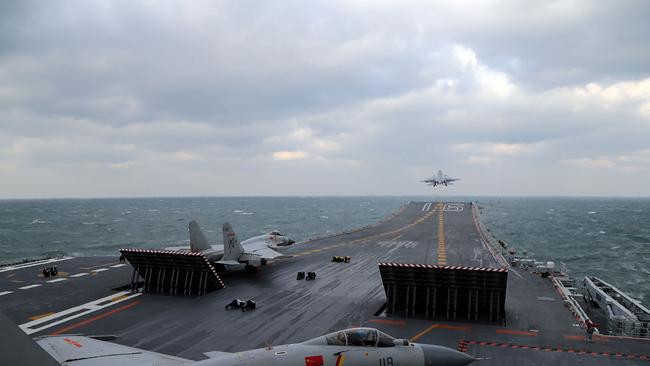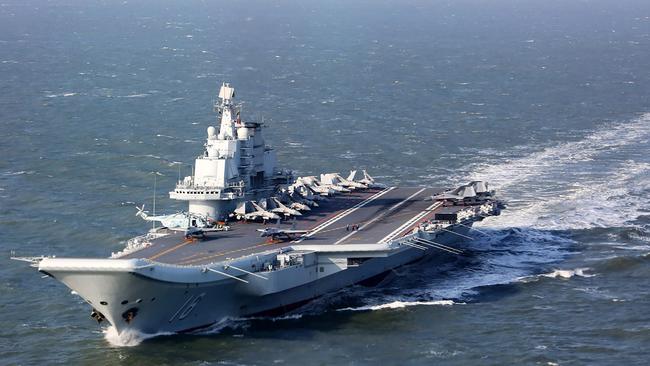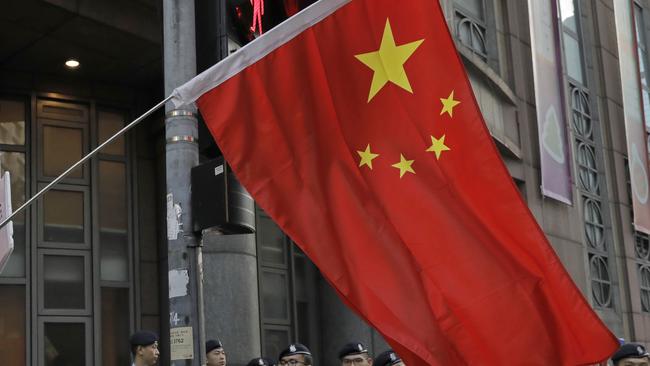Taiwan scrambles jets and navy vessels amid Chinese warship advancement
TAIWAN and China are exchanging provocative gestures between their borders, as tensions between the two regions continue to brew.

TAIWAN has scrambled military equipment in response to China’s decision to sail a group of warships through the Taiwan Strait, amid rising tensions between the two regions.
Earlier this week the Liaoning, China’s only aircraft carrier, sailed north through the Strait in what was seen as a symbolic show of strength.
The carrier, leading a Chinese fleet, reportedly entered Taiwan’s Air Defence Identification Zone (ADIZ) from the southwest at 7am on Wednesday.
According to the country’s state-run Central News Agency, Taiwan has deployed F-16 fighter jets, a surveillance aircraft and Navy frigates to “surveil and control” China’s ships in response.
These actions come as tensions brew between the two regions following US President-elect Donald Trump’s controversial phone call to Taiwanese president Tsai Ing-wen last month.
The Liaoning has not entered Taiwanese waters but has gone into an area covered by the island’s air defence zone, Taiwan’s defence ministry said.

Beijing responded that it was “very normal” for the Liaoning to pass through an international waterway as part of drills.
“Every year, in this season, China’s navy has a few exercises in the near seas and other maritime regions. These exercises are all for training,” said Liu Zhenmin, vice minister of foreign affairs.
Ms Tsai, who is currently in Nicaragua as part of a Central American tour, has been regularly instructing the national security team and the defence ministry by phone, presidential office spokesman Alex Huang said.
“The military is monitoring the whole situation and will act as necessary. We urge Taiwan’s people to be at ease,” the defence ministry said in a statement.
Meanwhile, Taiwan’s top policymaker for Chinese affairs Chang Hsiao-yueh has urged Beijing to resume dialogue with Taipei, after it halted official communication channels in June.
“The national security council has a good grasp of the situation. We are doing what is necessary,” she told reporters at an end-of-year briefing.
She also stressed it’s not necessary to panic, saying: “The government has sufficient capabilities to defend our country’s safety”.
In a statement on Wednesday, the Chinese government said it is “committed to promoting peace and stability” in Asia.

But China’s state-run Global Times newspaper has not been quite as amicable.
In an editorial published on Christmas Day, the press agency called on Beijing to build up its fleet of aircraft carriers, make them combat-ready and sail them to the eastern Pacific.
Timed to coincide with the Liaoning’s manoeuvres, the article warned that China “will have more aircraft carriers that bear more combat capabilities” in coming years.
“Aircraft carriers are strategic tools which should be used to show China’s strength to the world and shape the outside world’s attitude toward China,” the editorial says.
“It is not built for war only. Chinese aircraft carriers must set off on a long journey. China’s core interests are mainly offshore, but the range of aircraft carriers must go beyond offshore areas. The rivalry must be extended to wider areas so as to ease China’s offshore pressure.”
It warns that the Chinese military will take “firm countermeasures” in response to any acts of aggression from other countries in the region.
“Chinese people love peace, but the Chinese military must be resolute. China will not be easily irritated, but once it is, it will take firm countermeasures. The Liaoning and its fleet is expected to experience the cruel geopolitical competition and become a standard bearer of the Chinese navy.”
Beijing suspects Ms Tsai wants to push for the island’s formal independence, a red line for the mainland, which has never renounced the use of force to bring what it deems a renegade province under its control.
Ms Tsai says she wants to maintain peace with China.
— with wires



